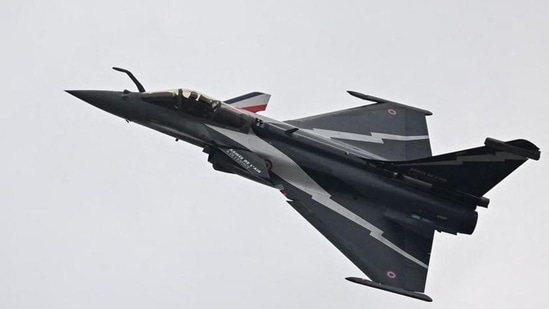India’s defence budget 2024: Hits and misses
This article is authored by Neelima A, research associate and Maalavika A, research associate, CPPR.
The defence sector budget allocation remained the same as the interim budget allocation, with finance minister Nirmala Sitharaman presenting the full budget on July 23, 2024, after the formation of the new government. This indicates an increase of 4.79% from the previous budget in the financial year 2023-24. While maintaining a focus on self-reliance and technological modernisation in the defence sector, India must carefully navigate potential challenges to achieve its goal of becoming a significant player on the international stage.

The defence sector has been consistently given priority over the years in line with the government's commitment towards Aatmanirbhar Bharat and Panchamrit goals. Defence minister Rajnath Singh tweeted that the new defence budget will further strengthen the capabilities of the armed forces. The current budget allocation is higher by 18.43 % from FY 2022-23. The defence services (revenue) has the highest allocation with ₹2,82,772.67 crore followed by capital outlay with ₹1,72,000 crore, pension with ₹1,41,205 crore and the civil sector with ₹25,963 crore.
The government's goal towards Aatmanirbarta is evident from the allocation of ₹1,05,518.43 crore for the procurement of capital through domestic industries this financial year, which will have a positive impact on gross domestic product (GDP), employment generation and capital formation. The Border Roads Organisation (BRO) has seen a 30% higher allocation compared to last financial year. With the increased tension at the border in the eastern region of India and China’s aggressive expansionism, along with other ongoing geopolitical tensions like the Russia-Ukraine war and the ongoing conflict in West Asia, it is important for India to secure its border and project strength in the current situation. It will also lead to socioeconomic developments in the border areas with the implementation of projects like Nyoma Airfield in Ladakh and Nechipu Tunnel in Arunachal Pradesh that will boost connectivity in the regions.
India being a peninsular nation with oceans being the majority of its border and with growing maritime security threats from major power plays in the region as well as other non-State actor threats, it is positive on the side of increased allocation on the Indian Coast Guard (ICG) with 6.31% which amounts to ₹7,651.80 crore. The allocation will enable the procurement of rapid-response patrol vehicles/interceptors, advanced electronic surveillance systems, and weaponry.
But on the other side, the consolidation of the three services in the budget into the single head of defence services to foster jointness and integrated capability has led to ambiguity in terms of capital allocation. The separated budgetary allocation would enable analysts to get a better idea in terms of the individual capabilities of the three services and provide better transparency on the government’s spending. Even though the budgetary allocation to the Defence Research and Development Organisation (DRDO) has increased to ₹23,855 crore in FY 2024-25 from ₹23,263.89 crore in FY 2023-24, there has not been a notable growth in the budget allocation, in contrast with the government’s push for modernisation and indigenisation of technology. For defence exports to reach the 50,000 crore mark, there needs to be an increased allocation of funds to the DRDO. While the Agneepath scheme was introduced with one of its goals of reducing the pension spending of the government, the allocations for defence pensions continue to be on the rise, with ₹1,41,205 crore allocated to pensions, which is 2.17% higher than the allocation made during 2023-24. This indicates that the government’s pension spending is to remain high, despite efforts to lower it.
Though the defence minister received the budget on a positive note, terming it “excellent” and incentivising the country’s movement towards Viksit Bharat, its effectiveness in projecting India’s power in the international arena needs to be evaluated in the long run. The defence budget receiving the highest allocation amongst the various ministries underlines the government’s commitment to strengthening the military capabilities of the country. However, achieving the goals of inclusive and fast paced development would require the judicious use of the resources allocated.
Key takeaways:
- The defence sector budget remained the same as the interim budget, marking a 4.79% increase from the previous financial year, reflecting a consistent priority towards defence spending.
- Considering the emerging maritime threats, there has been an increased allocation for the ICG by 6.31% to address maritime security threats and procure advanced surveillance and response equipment.
- Despite a slight increase in DRDO’s budget to ₹23,855 crore, the growth is not significant enough to match the government’s push for modernisation and indigenisation.
- Despite the introduction of the Agneepath scheme, pension spending continues to rise, with a 2.17% increase from the previous year, indicating persistent high pension costs.
- While the budget has been positively received, its long-term effectiveness in projecting India’s power internationally and achieving inclusive development remains to be evaluated.
This article is authored by Neelima A, research associate and Maalavika A, research associate, CPPR.





